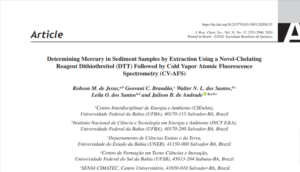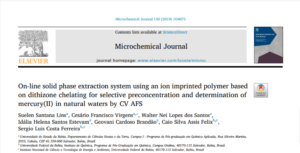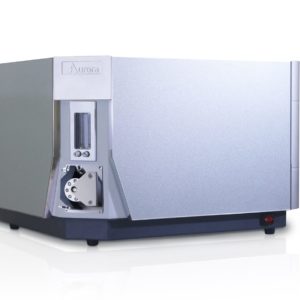
PRODUCT INFORMATION
The LUMINA 3500 Atomic Fluorescence Spectrometer provides elemental analysis solutions for sub trace detection of hydride-forming elements. The unique vapour/hydride generator provides enhanced sensitivities and reduced interferences for parts per trillion (ppt) detection of Mercury (Hg), Arsenic (As), Cadmium (Cd), Zinc (Zn), Bismuth (Bi), Selenium (Se), Tellurium (Te), Antimony (Sb), Tin (Sn), Germanium (Ge), and Lead (Pb).
LUMINA 3500 Atomic Fluorescence Spectrometer
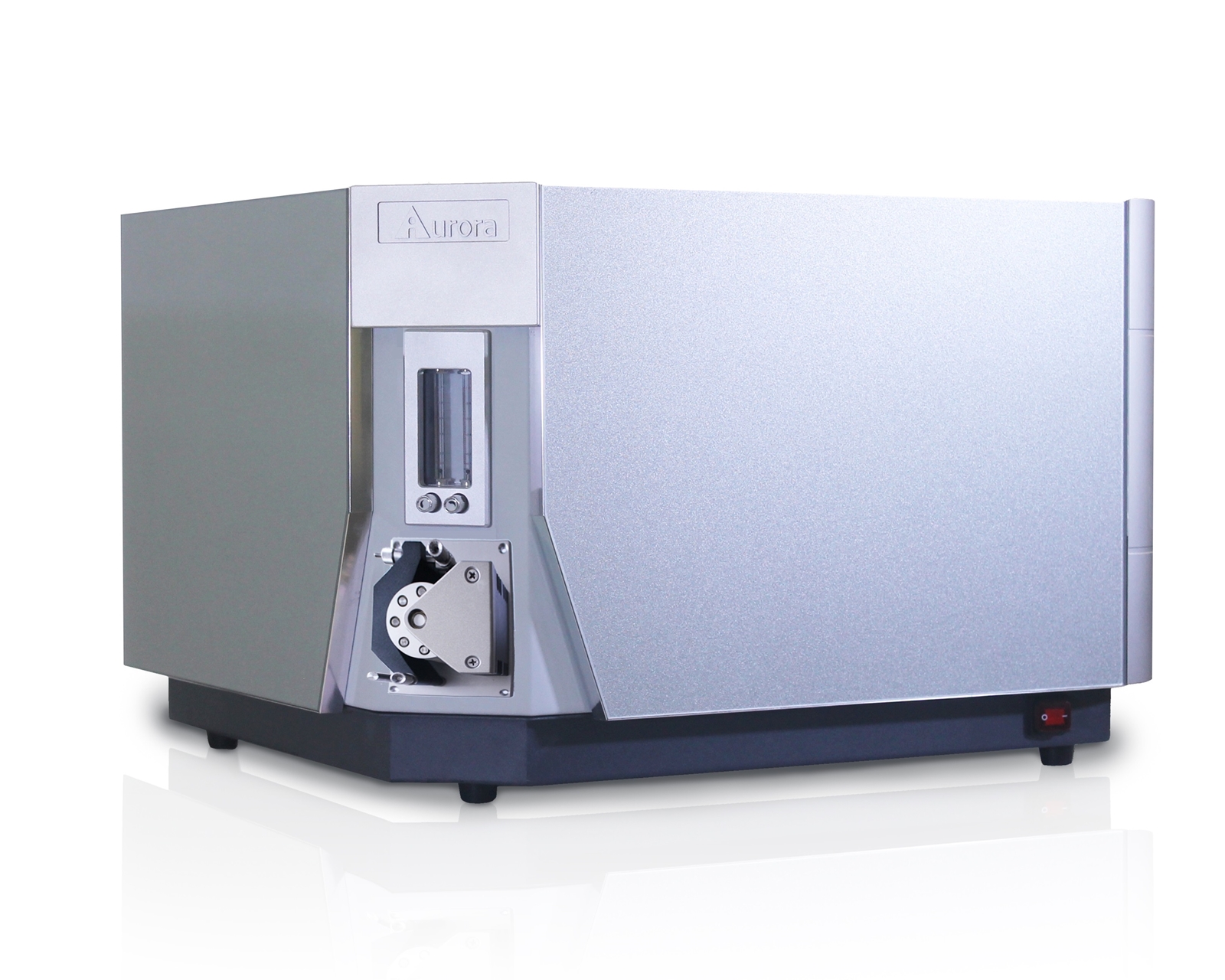
The LC-LUMINA 3600 (Integrated High Pressure Liquid Chromatography – Atomic Fluorescence Spectrometer 3500) can be used for the application of speciation analysis, or quantifying ultra-trace concentrations of different molecular versions of the same compound.
The LC-LUMINA 3600 finds use for environmental applications such as precise quantifications of inorganic and organic forms of Mercury (Hg) and other hydride forming elements from biological samples. This is because elements in different oxidation states exhibit different adsorption tendencies, thereby enabling speciation analysis using an integrated HPLC-AFS system.
LC-LUMINA 3600 Atomic Fluorescence Spectrometer
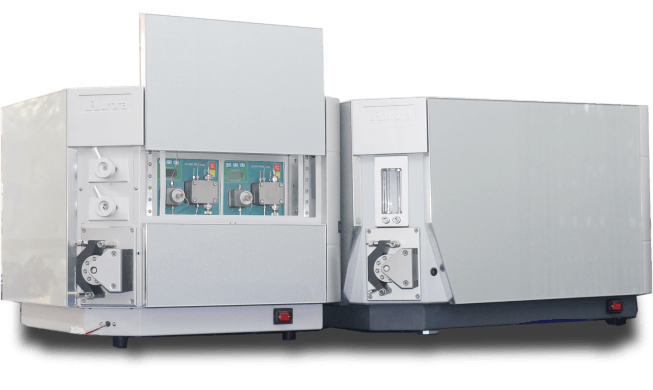
The LUMINA 3500/3600 Atomic Fluorescence Spectrometer is ideal for elemental analysis in various research sectors, including; environmental, agricultural, geological, metallurgical, pharmaceutical, clinical and petrochemical. It is capable of acting as a mercury analyzer while also carrying out elemental analysis of all hydride-forming elements.
- Clinical
- Environmental/Public Health/Disease Control
- Agricultural/Food Safety
- Geological/Metallurgical
- Pharmaceutical
- Petrochemical
- New regulations
- Vapor / Hydride generator
- Sub-trace level detection limits for mercury and hydride-forming elements
- Linear dynamic range of 10³
- Covered optical design
- Dual-channel simultaneous measurement
- All-in-one mixing manifold, low dead volume, high efficiency, double gas/liquid separator design
- Automatic Ar-H2 flame ignition
- Integrated exhaust system
- Revolutionary gas/liquid separator
- Reaction/Mixing manifold
- Covered optical design
- Dual Channel simultaneous analyses
- Integrated exhaust system
- User-friendly, Windows-based software
- XYZ autosampler (optional)
- Can be used as a mercury analyzer
- Four lamp holder two channel design, double channel simultaneous analysis
- Short focal length and all closed optical path reduce spectral interference and improve signal to noise ratio
- Greatly reduce interference by using large gauge integrated circuits
- Low temperature ignition shielded quartz atomizer
- An integrated gas liquid separation unit reduces the dead volume and improves the separation effect
- An integrated gas liquid separation unit reduces the dead volume and improves the separation effect
Independently Validated
Determining Mercury in Sediment Samples by Extraction Using a Novel-Chelating Reagent Dithiothreitol (DTT) Followed by Cold Vapor Atomic Fluorescence Spectrometry (CV-AFS)
On-line solid phase extraction system using an ion imprinted polymer based on dithizone chelating for selective preconcentration and determination of mercury(II) in natural waters by CV AFS
What is Atomic Fluorescence Spectroscopy?
In atomic fluorescence spectroscopy, similar to the related technique of atomic absorption spectroscopy, a sample absorbs light at a particular wavelength to promote its electrons from its ground electronic state into an excited state. From this excited electronic state, the electron drops down to a lower electronic state, emitting a photon with a specific wavelength in the process. By measuring the intensity of the emitted light at particular frequencies, it is possible to determine the concentration of the element in question via atomic fluorescence spectrometry.
What type of elements can be detected by the LUMINA AFS?
The LUMINA series of Atomic Fluorescence Spectrometers provide sub-trace detection and elemental analysis of hydride-forming elements. The unique vapor/hydride generator provides enhanced sensitivities and reduced interferences for detection of Mercury (Hg), Arsenic (As), Cadmium (Cd), Zinc (Zn), Bismuth (Bi), Selenium (Se), Tellurium (Te), Antimony (Sb), Tin (Sn), Germanium (Ge), and Lead (Pb).
What is the detection limit of the LUMINA AFS systems?
Detection limit for the following elements is specified in table in below:
| Element | Detection Limit (μg/L) | RSD (%) |
| As, Se, Pb, Bi, Sb, Te, Sn | 0.01 | <1.0 |
| Hg, Cd | 0.001 | <1.0 |
| Zn | <1.0 | <1.0 |
| Ge | <0.05 | <1.0 |
What type of atomizer and gas/liquid separator technology is used in the LUMINA Atomic Fluorescence Spectrometer?
The LUMINA AFS system uses a quartz tube furnace with an interference-reducing Ar-H2 diffusion flame. This flame is ignited automatically within the instrument. The LUMINA AFS system is also equipped with a two-stage gas/liquid separator and a filtered, integrated exhaust system that can efficiently decontaminate pollutants during sample preparation and delivery steps.
Can Atomic Fluorescence Spectroscopy be used for Mercury (Hg) detection?
Yes, the LUMINA AFS system utilizes the Cold Vapor method for mercury detection. Mercury analysis is a critical component of food and water safety, agriculture, and environmental monitoring. Samples must be digested prior to analysis to ensure accurate analyte measurements.
Is Atomic Fluorescence Spectroscopy a recommended method for Mercury (Hg) detection in environmental samples?
Yes, the Cold Vapor method used by the LUMINA Atomic Fluorescence Spectrometer is recommended by the USFDA for detection of Mercury at ppb or sub-ppb levels.
Is LUMINA AFS competitive against ICP method for Mercury (Hg) detection?
Yes; for example, the LUMINA AFS system has a detection limit for mercury for 1ppt, which is comparable to literature reported detection limits for mercury with ICP-MS. Additionally, the plasma temperatures utilized in ICP-MS may be too hot for accurate mercury analysis, leading to premature mercury decomposition and thus unreliable results.
Can the LUMINA AFS instrument be integrated with an autosampler?
Yes, the LUMINA includes an optional XYZ autosampler for sample introduction that hosts a maximum of 192 standard cup/test tube sample racks. It is compatible with standard solvent extraction test tubes, ICP test tubes, and custom-made trays.
What type of light sources do the LUMINA AFS systems use for elemental detection?
The LUMINA Atomic Fluorescence Spectrometers are equipped with specially-designed high intensity Hollow Cathode Lamps (HCL) with 2-channel independent power supplies, providing improved sensitivities and lower detection limits. It also features dual channel, simultaneous two-element analysis, using a computer controlled pulsed light sources.



